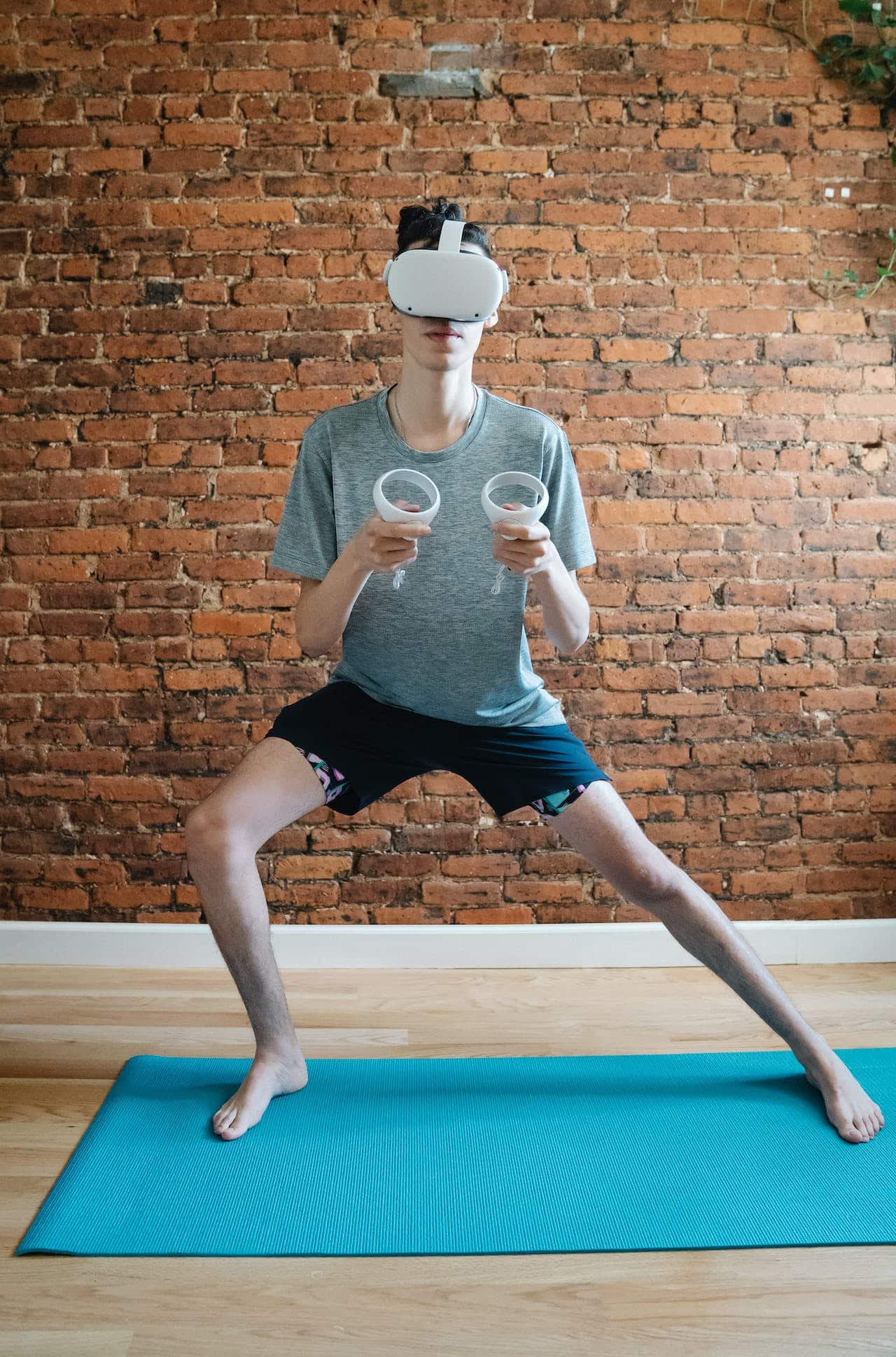In an era dominated by digital advancements, our daily lives are increasingly intertwined with technology. From smartphones to smart homes, digital tools offer unparalleled convenience and connectivity. However, this constant digital engagement comes with its own set of challenges, including information overload, privacy concerns, and the potential for increased stress and anxiety. Amid these challenges, a new movement has emerged: digital wellness.
This movement seeks to harness technology not as a source of stress, but as a means to promote mindfulness and well-being. Digital wellness focuses on creating a balanced relationship with technology, where digital tools are used intentionally to enhance our physical and mental health, rather than detract from it. Innovations in the tech industry have led to the development of various devices and platforms designed specifically to promote mindfulness and stress management.
IMAGE: PEXELS
From mindfulness apps that offer guided meditation sessions to wearable devices that monitor stress levels, technology is offering new pathways to achieve a balanced and mindful lifestyle.
The intersection of technology and wellness opens up exciting possibilities for enhancing our well-being in the digital age.
By leveraging these tools, individuals can cultivate mindfulness, reduce stress, and maintain a healthier, more balanced life. This article explores the various ways in which tech innovations are fostering mindfulness, highlighting specific devices and platforms that are leading the charge towards a more mindful digital existence.
The Rise of Mindfulness Apps
In recent years, mindfulness apps have surged in popularity, becoming a cornerstone of digital wellness. Apps like Headspace and Calm offer users a convenient and popular way to practice meditation and mindfulness, regardless of their experience level or busy schedules. These platforms provide a wide range of guided meditations, breathing exercises, and sleep stories created to help users reduce stress, improve focus, and achieve a sense of calm.
The effectiveness of mindfulness apps lies in their ability to make meditation practices more accessible to a broader audience. Users can engage in mindfulness exercises anywhere and anytime, making it easier to incorporate these practices into their daily routines. Scientific studies and user testimonials have increasingly supported the benefits of using mindfulness apps.
Research indicates that regular use of these apps can lead to suggestive improvements in mental health, including lowered symptoms of anxiety and depression, enhanced sleep quality, and increased overall well-being.
Despite their benefits, mindfulness apps are not without criticism. Some argue that the experience of meditation through a digital medium can detract from the practice’s inherently personal and introspective nature. However, many users find that these apps serve as an essential first step in their mindfulness journey, providing the guidance and structure needed to develop a consistent practice.
As we continue to explore the role of technology in promoting wellness, it’s clear that mindfulness apps represent a significant stride forward. By making mindfulness practices more accessible and engaging, these apps play a pivotal role in aiding individuals navigate the stresses of the digital age with greater ease and resilience.
Wearable Wellness Technology
The landscape of wellness technology has expanded beyond apps to include a variety of wearable devices designed to monitor and improve health. These devices, ranging from fitness trackers and smartwatches to VR headsets specifically designed for meditation and stress management, represent a significant leap in how we approach wellness in the digital age.
Fitness trackers and smartwatches, for example, have evolved to do more than just count steps or monitor physical activity. They now offer features that track sleep patterns, heart rate variability, and even stress levels, providing users with comprehensive insights into their overall health. By monitoring these indicators, individuals can identify patterns and triggers that affect their well-being and take proactive steps to manage stress and improve their mental health.
Virtual Reality (VR) headsets are another innovative tool in the realm of digital wellness, offering immersive experiences that can aid in meditation and stress relief. These headsets transport users to serene environments, from quiet forests to peaceful beaches, providing a unique evade from the hustle and commotion of everyday life. The immersive nature of VR meditation can enhance the mindfulness experience, making it easier for users to focus and engage in deep relaxation practices.
Wearable wellness technology empowers individuals to take control of their health in new and exciting ways. By giving real-time data and personalized insights, these devices encourage a more mindful and healthy lifestyle. However, it’s essential for users to remain mindful of their screen time and ensure that their use of wearable technology supports, rather than hinders, their overall wellness goals.
The Emergence of Wellness Platforms
Beyond standalone apps and devices, comprehensive digital wellness platforms have started to emerge, integrating various tools and resources into a single ecosystem. These platforms, such as MyFitnessPal and Wellness360, offer a holistic approach to wellness, combining fitness tracking, nutrition guidance, mental health support, and social networking features. By bringing these elements together, wellness platforms provide a more integrated and supportive approach to achieving health goals.
One of the key benefits of these platforms is the role of community and social support. Users can share their journeys, challenges, and successes with others, fostering a sense of connection and accountability that can be incredibly motivating. This social aspect is crucial in maintaining long-term engagement with wellness practices and achieving sustained improvements in health and well-being.
Moreover, the personalization and use of AI in wellness platforms offer tailored experiences to users. By analyzing data from various health indicators and personal preferences, these platforms can recommend customized wellness plans, meditation sessions, and fitness routines. This level of personalization ensures that each user’s unique needs and goals are met, making wellness better accessible and efficient for a broader audience.
As wellness platforms continue to evolve, they represent a promising future for digital wellness, offering users comprehensive and integrated tools to support their health and well-being. However, the challenge lies in ensuring these platforms remain accessible and beneficial to all users, regardless of their technological proficiency or access to digital devices.
Challenges and Criticisms
While the potential of technology to enhance wellness is immense, it’s not without its challenges and criticisms. One of the highest concerns is privacy and data security. With the increasing amount of personal health information being collected by apps and devices, users must be vigilant about how their data is used and shared.
Additionally, the paradox of increased screen time is a significant concern. While digital tools aim to promote wellness, excessive use of these technologies can lead to digital fatigue, disrupting sleep patterns and contributing to stress. It’s essential for users to find a balance, ensuring that their engagement with digital wellness tools enhances rather than detracts from their overall well-being.
The digital split also poses a challenge to the accessibility of wellness technology. Not everyone has equitable access to the devices and platforms that promote mindfulness and well-being, potentially widening the gap in health disparities. Addressing these issues requires concerted efforts from tech companies, policymakers, and communities to make digital wellness tools more inclusive and accessible to all.
Envisioning a Balanced Digital Life
Achieving a balanced digital life is paramount in leveraging technology for wellness effectively. Strategies such as implementing digital detoxes, establishing tech-free zones, and practicing mindful technology use can help individuals maintain a healthy relationship with digital devices. By setting boundaries and being intentional about technology use, users can enjoy the benefits of digital wellness tools without succumbing to the pitfalls of excessive screen time.
Looking towards the future, technology will continue to play a crucial role in promoting wellness. Innovations in AI, augmented reality, and other digital tools hold the promise of creating even more personalized and effective wellness experiences. As we navigate this evolving landscape, the key will be to remain mindful of our technology use, ensuring that it serves to enhance rather than hinder our journey towards a healthier, more balanced life.
Conclusion
The intersection of technology and wellness offers exciting possibilities for enhancing our well-being in the digital age. From mindfulness apps and wearable devices to comprehensive wellness platforms, tech innovations are providing new pathways to mindfulness and stress management. However, as we embrace these tools, it’s crucial to remain aware of the challenges they present, including privacy concerns, the risk of increased screen time, and ensuring accessibility for all.
By adopting strategies for a balanced digital life and leveraging technology mindfully, we can harness the potential of these innovations to foster wellness. The future of digital wellness is bright, with ongoing advancements promising to deliver even more personalized and effective solutions for maintaining health and well-being.
As individuals and communities, our responsibility is to navigate this digital landscape intentionally, embracing the tools that support our wellness goals while maintaining a critical eye on their impact on our lives.
This exploration of wellness in the digital age underscores the importance of mindfulness and balance in our relationship with technology. As we continue to integrate digital tools into our lives, let’s do so with the goal of enhancing our well-being, ensuring that our digital existence supports a healthy, mindful, and fulfilling life.
IMAGE: PEXELS
If you are interested in even more lifestyle-related articles and information from us here at Notilizer, then we have a lot to choose from.


COMMENTS